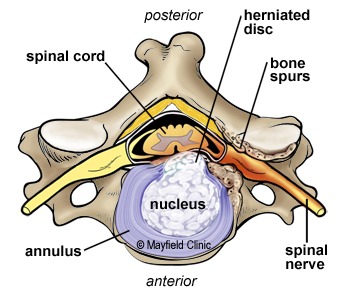Transforaminal Interbody Fusion (TLIF)



Transforaminal Interbody Fusion (TLIF) is a surgical procedure used to treat spinal conditions by fusing two or more vertebrae in the lumbar (lower back) region. This procedure involves accessing the spine through the back, specifically through the neural foramen (the opening where nerve roots exit the spinal canal). TLIF is often used to treat conditions such as degenerative disc disease, spinal stenosis, and spondylolisthesis. Here is an overview of TLIF for patients:
Indications:
Degenerative Disc Disease: Wear and tear on lumbar discs leading to pain and reduced mobility.
Disc Herniation: Protrusion of disc material causing compression of nerves.
Spinal Stenosis: Narrowing of the spinal canal leading to nerve compression.
Spondylolisthesis: Forward slippage of one vertebra over another.
Preparation:
Medical Evaluation: Patients undergo a thorough medical evaluation, including imaging studies (MRI, CT scans) to assess the extent of the lumbar spine issue.
Discussion with Surgeon: The surgeon explains the procedure, discusses potential risks and benefits, and answers any questions the patient may have.
Procedure:
Positioning: The patient is typically positioned on their stomach.
Anesthesia: General anesthesia is administered to ensure the patient is asleep and pain-free during the procedure.
Incision: An incision is made in the lower back to access the lumbar spine.
Decompression: The neural foramen is accessed to decompress nerve roots if necessary.
Discectomy: The intervertebral disc is removed to prepare the space for fusion.
Bone Graft or Implant: A bone graft, often taken from the patient’s hip, or a synthetic implant is placed in the empty disc space to promote fusion between adjacent vertebrae.
Instrumentation: Screws, rods, or other instrumentation may be used to stabilize the spine during the fusion process.
Closure: The incision is closed with sutures or staples.
Recovery:
Hospital Stay: The length of the hospital stay is typically a few days.
Activity Restrictions: Patients are advised to avoid certain activities, such as heavy lifting or strenuous exercise, during the initial recovery period.
Physical Therapy: Rehabilitation exercises and physical therapy are introduced gradually to help restore lower back strength and mobility.
Follow-up:
Postoperative Visits: Patients have follow-up visits with the surgeon to monitor the healing process, address any concerns, and assess the effectiveness of the procedure.
Imaging Studies: X-rays or other imaging studies may be conducted to evaluate the fusion progress.
Potential Risks and Considerations:
As with any surgical procedure, there are risks, including infection, bleeding, and complications related to anesthesia.
The success of fusion may vary among individuals.
Changes in spine biomechanics may occur.














